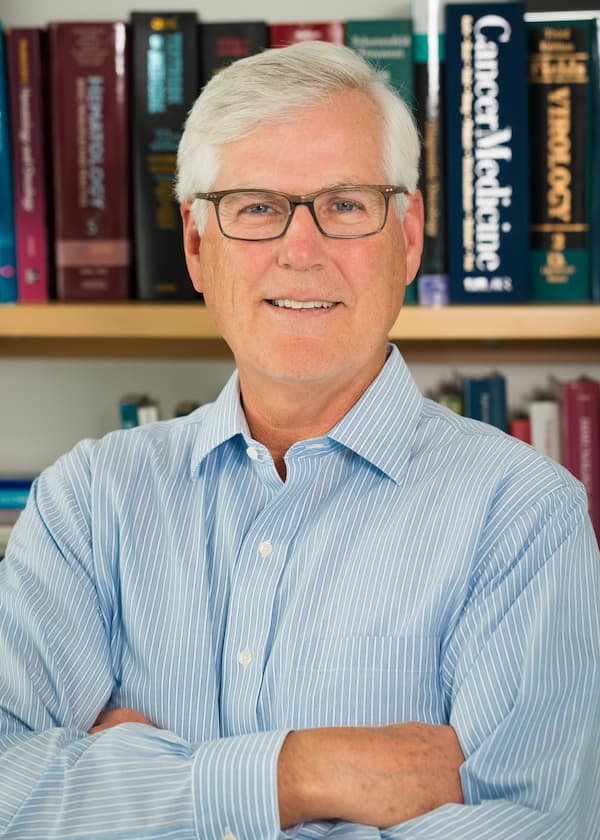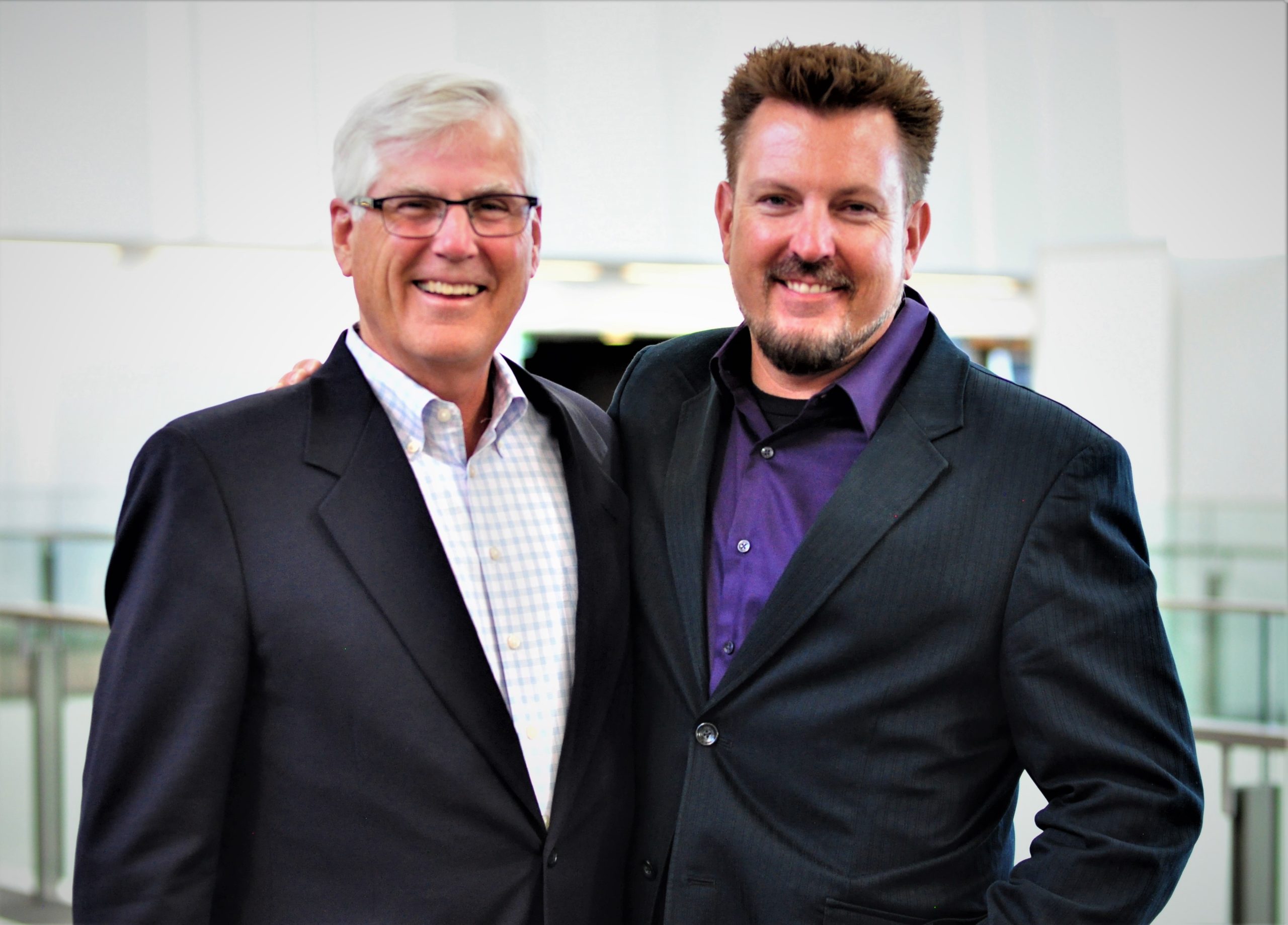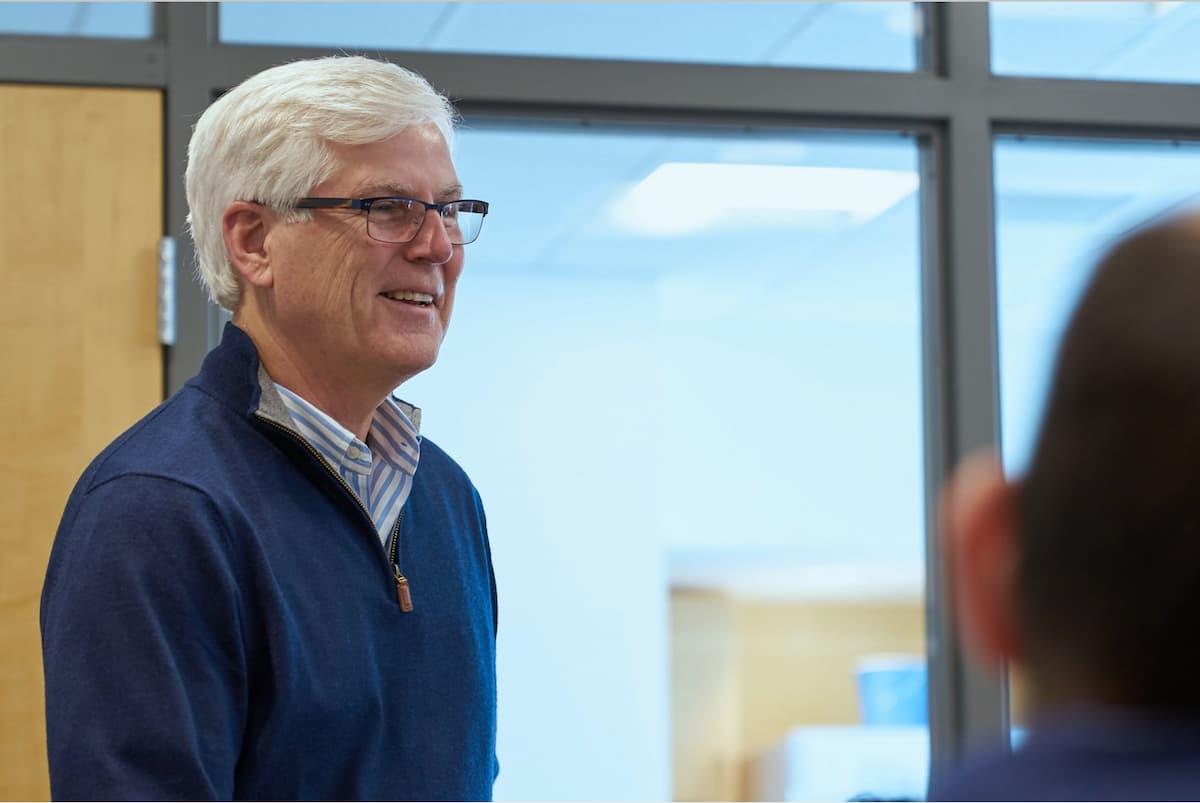Searching for “more effective and gentler” therapies for AML
Dr David Scadden is a haematologist/oncologist at Massachusetts General Hospital (U.S.) and a physician/scientist whose lab pioneered the research field known as niche biology. The Professor of Harvard University’s Department of Stem Cell and Regenerative Biology spoke to AML News at the 2019 International Society of Experimental Hematology (ISEH) conference in Brisbane, where he was awarded the Leukaemia Foundation-sponsored Donald Metcalf Award* and gave the opening lecture: Primitive sensing and communication mechanisms regulating bone marrow hematopoiesis.
Why did you choose a career in haematology?
Partly because of my personal experience. When I was an intern, my mother was diagnosed with a malignancy and died by inches. Then my father was diagnosed and died of a cancer as well. I hadn’t gone into medicine thinking I’d go into cancer therapies, but I realised… few things were as important as combatting cancer. I wanted to do something about that problem, hoping families would have a different story to tell than mine. As a haematologist, I thought the care of people with what we knew currently was hopelessly inadequate and deeply frustrating, and we had to do better. I was not trained as a scientist, but I wanted to be a part of solving the problem, not just for the individual patient but for a larger group of people. That’s what drove me.
What is the difference between a haematologist and an experimental haematologist?
A haematologist deals with problems in the blood using existing therapies. An experimental haematologist does things in the laboratory to understand the basis of blood problems by studying them with experiments and hoping to ultimately develop new therapies. You become an experimental haematologist by having a compelling interest and wanting to make a difference for people with blood diseases and cancer. Some people are also drawn to it (experimental haematology) just because blood is fascinating.
Why is blood so fascinating?
Blood has taught us a huge amount about every tissue in the body because it is so accessible. When a new technology comes around, blood is one of the first things looked at and tested. When microscopes came out centuries ago, one of the first things to be looked at was blood. Blood is very eloquent. When you go to the doctor, they sample blood because within it is information about all our organs and it can give us great insight into human health and disease.

Why did you want to do blood work?
One of the things that made me want to work with blood was because I could be with a patient and hear the symptoms they had, then look under the microscope and see the cells that were the basis for them. Going from a person to a cell and ultimately to a molecule is very unusual in medicine but is commonplace in haematology. The cause of the problem, progress of the therapy, or unfortunately, progress of the disease, are all measurable with simple sampling of the blood. And you can get hold of the cells that are driving blood cancer if you are interested in understanding the underlying biology. The first genetic analyses of what was driving cancers were found in the blood. And the first ability to use therapies, like stem cell transplantation, to cure people with otherwise absolutely incurable disease, was in the blood. The blood has largely driven what we think of as molecular medicine and the emerging field of cell therapies.
I was fortunate to have teachers and mentors who were experts in blood, and lucky also to be at places where they supported people trying to do both patient care and laboratory studies with their careers. And they tolerated a hack like me – an old literature major! [ Dr Scadden studied literature as an undergraduate.]
I also started my career when there was a new horrifying and fatal disease, AIDS. As part of my training, I worked in a lab studying viruses that cause leukemia in mice. It turns out that those viruses are related to the type of virus that was then found to cause AIDS. Few haematologists were willing to see patients with AIDS and yet those patients had blood disorders and cancers. Since I knew something about the virus, I felt I should be involved. I started working with people with blood cancers and AIDS. It was tragic because the people I was seeing had two death sentences and we had virtually nothing to offer them. That further compelled me to push for both a laboratory and clinical research aspect to my work and perhaps the work of others. A number of us organised and convinced the U.S. National Cancer Institute to establish an international AIDS malignancy consortium that remains active to this day.
How did you get into stem cell research?
I wanted to rebuild the immune system in AIDS from the stem cell up. I thought it might be possible to use gene therapy (delivered by the viruses I had worked on) to make the cells impervious to HIV. I was involved in the early clinical trials testing gene therapy for AIDS and that experience made me realise we needed to know a lot more about stem cells to make them better therapies. I got very involved in basic stem cell research. Realising that stem cells could have a far broader effect than on just blood disorders, I co-founded the Harvard Stem Cell Institute to accelerate stem cell research across fields. Within it, my lab remained focused on blood stem cells and the way they are governed. I wanted to make better, safer, more effective stem cell therapies and to figure out how we use the normal stem cell to teach us how things go wrong to cause leukaemia. People going through stem cell transplant have very intensive chemotherapy or radiation, or both, and the collateral damage is extensive. They get terribly ill. These therapies have not changed fundamentally for decades.
What are you doing differently?
We thought there were ways we could take advantage of more targeted therapies, specifically, antibodies. We’ve done some successful work in animal models that allows for the animals to get a transplant and have full engraftment without many of the side-effects or damaging consequences. My hope is to make transplantation a lot safer and move it to earlier in the care of people with disorders for which transplant is already used. It may also allow us to use transplantation to treat people with sickle cell anaemia, thalassaemia, or those who have autoimmunity. Transplants can be curative… it’s just not used very often because the process is so toxic. We’ve tried to reduce that barrier, with the hope that this curative therapy can be done without all the adverse consequences.
To understand the process of how the bone marrow can go awry and lead to AML, we’ve looked at how cells get ‘stuck’ on their path from an immature to a mature cell type. They retain stem cell characteristics that allow them to expand and fail to conduct the work of mature cells. This is fundamentally what happens in AML (and most cancers). We work on ways to encourage the leukaemia cells to differentiate (undergo change) to allow these cells to get out of the highly aggressive, malignant state. That’s been done for a small subset of leukaemias, those with acute promyelocytic leukaemia (APML), with therapies that don’t involve standard cell toxic chemotherapy at all. We can cure 98% of those people with all-trans retinoic acid (ATRA) and arsenic. That combination is incredibly effective. So, the question is, can this approach be applied to all the myeloid leukaemias, not just this tiny subset? We have worked on a system to try to do that. A discovery a couple of years ago has moved into clinical testing and five different companies are developing five different drugs to target it. We hope that that will end up being something useful for AML.

What is your overall research objective?
To reduce misery. That’s why I do science. Science is the only way to get good therapies. I love the quote, and I don’t know where it came from, that “every medical miracle began with a good basic science experiment”. I think that’s true. If we’re going to be better as care providers, we need to embrace and use and leverage science. Doing good science to develop new therapies in the service of people suffering from disease is what I would like my contribution to be.
What are you doing in the niche environment?
I work on the way haemopoietic stem cells make blood. It happens in a particular place – the bone marrow – and when it goes awry, it kills people. I want to understand the normal process in detail, to better understand how it goes wrong, and how to develop therapies that are not just big sledgehammers, like standard chemotherapy. We need something that is more effective and gentler.
A niche is like a neighbourhood. Cells, like us, don’t live in isolation. They are affected by their neighbourhood and there are very specific cells that are important neighbours. We’ve defined some of those and are using that information to help us be better at transplant or to understand how we might be better at treating leukaemias or MDS. Some experiments showed that if we put a normal stem cell in the context of an abnormal neighbourhood, like an adolescent who grows up in a bad neighbourhood, their chances of having a bad outcome are much higher. The niche (the environment/neighbourhood) can corrupt a normal cell, so we ought to be thinking about treatments, not just as therapies that target the leukaemia cells, but also their neighbourhood, and is that a way to give us a new set of treatments to augment the currently useful, but inadequate, treatments we have today?
The blood system is amazing in its ability to ramp up and respond to demand. That all happens in the context of this niche. Who drives it? Who says when the cells should stop growing? And who helps by being the gatekeeper or the bouncer, to make sure the good ones are preserved over the troublemakers?
We’ve identified some cells that we think are important for particular functions, and the ways in which, if they are abnormal, they can create problems in the blood. What we don’t know is how well these models reflect what happens in humans, and we don’t know whether intervening will change the frequency of cure or prevention of disease. We know that with leukaemia, we can get most people in remission, but we can’t keep them there.
Our hope is that by changing the environment, you disadvantage the abnormal cells so the normal cells can come back and proposer, and that they might sustain suppression of the malignant cells; hypothetical at this point. I think chemo will be a part of the way we treat leukaemia for a long time, but the hope is that we get to the point where we won’t. We’re looking at ways to modify the relative competition between the abnormal cells and normal cells without having to go as far as a transplant or intensive chemotherapy, and this might have the ability to either forestall or prevent AML or MDS.
Right now, we would like to make the activity of the chemo drugs have greater staying power and eradicate those residual cells that are the roots of the dandelion that allow the leukaemia to keep coming back.
There is something about the niche that enables leukaemic cells to tolerate the chemotherapy and this is part of the mechanism by which these cells are surviving the chemo.
What happens day-to-day in your lab?
There are 14 of us in the lab. We get patient samples but are dependent on being able to model human diseases in animals and analysing the molecular underpinnings of those diseases. We do things related to understanding the genes, their expression, and how that affects particular proteins, how that changes how the cells grow, and where they reside. We also work with physicists who design instruments to allow us to look inside the bone marrow in a living animal and to see a transplant happening in real time. We can see the leukaemia developing, we can see the leukaemia responding to chemotherapy, and then we can see the leukaemia relapsing.
We can extract those cells, and we work with people who do high resolution molecular analyses, like mass spectrometry, to understand the molecules and how they are changing in that environment. We work with a range of different scientists – people with sleeves rolled up, who are working hard through the day-to-day grind of doing experiments. We are also huddled around computers, analysing the information that we have. We are meeting as groups with other scientists, to determine how to best understand what we’ve got and best leverage it to get back to patients.
We are writing a lot… about what we’ve found, to give information to others in the field, and we spend a lot of time trying to get funding to continue the work. Some of us work with companies to see if these discoveries can also become therapies. That is something I care a lot about. Things that are published as papers are nice, but things that are published as papers and become medicines – that’s what I care about. That’s the only way we will ever get ahead in the therapy world, and that requires a commercial entity. You can’t do that in an environment of an academic institution alone; we must have partners who know how to make medicines.
Do you think we will have zero lives lost to blood cancer in the foreseeable future?
For certain blood cancers we are seeing marked reductions in deaths. When I started my training, APML was absolutely the worst blood cancer to get, and among the worst cancers to get. Now it is among the best. The survival curve has completely flipped because of science. This happened as better understanding enabled more rational treatments. So, can we do that with every blood cancer? I would say we are making progress on almost every one of them. I think we are also getting a better understanding of who is at risk. I think, 10 years from now, haematologists will have very different conversations with their patients. They will be discussing how to prevent disease and I hope, about enjoying the disease-free years ahead.
What is your holy grail – the one thing you would like to achieve in your career?
If something that came out of my lab makes a difference for patients with a blood cancer, I will die a happy man.
* The Donald Metcalf Award was established 21 years ago in honour of Professor Donald Metcalf, the Australian medical researcher regarded as ‘the father of modern haematology’ for his pioneering work on the control of blood cell formation. This award recognises distinguished scientists who have made seminal contributions in the field of haematology.
Last updated on February 22nd, 2022
Developed by the Leukaemia Foundation in consultation with people living with a blood cancer, Leukaemia Foundation support staff, haematology nursing staff and/or Australian clinical haematologists. This content is provided for information purposes only and we urge you to always seek advice from a registered health care professional for diagnosis, treatment and answers to your medical questions, including the suitability of a particular therapy, service, product or treatment in your circumstances. The Leukaemia Foundation shall not bear any liability for any person relying on the materials contained on this website.